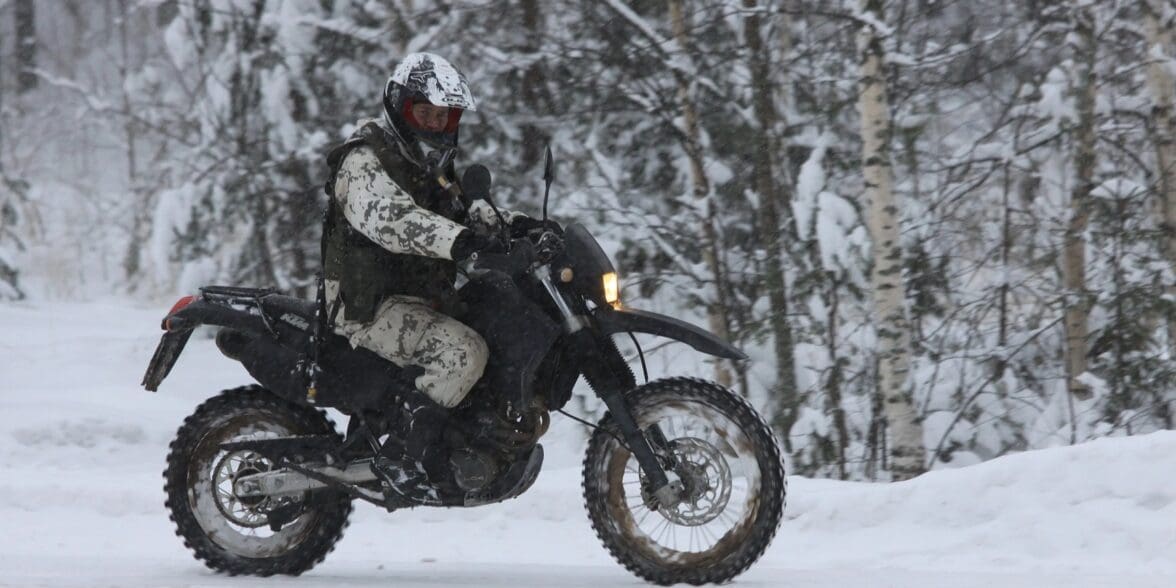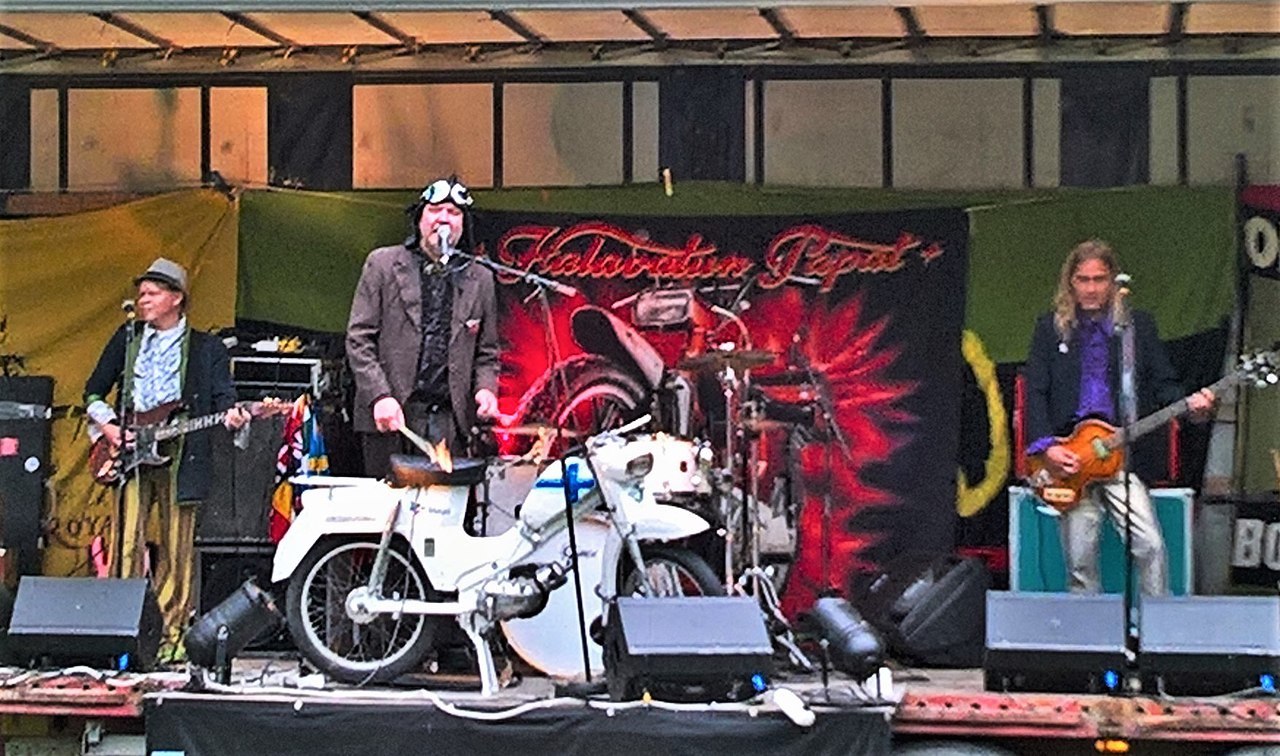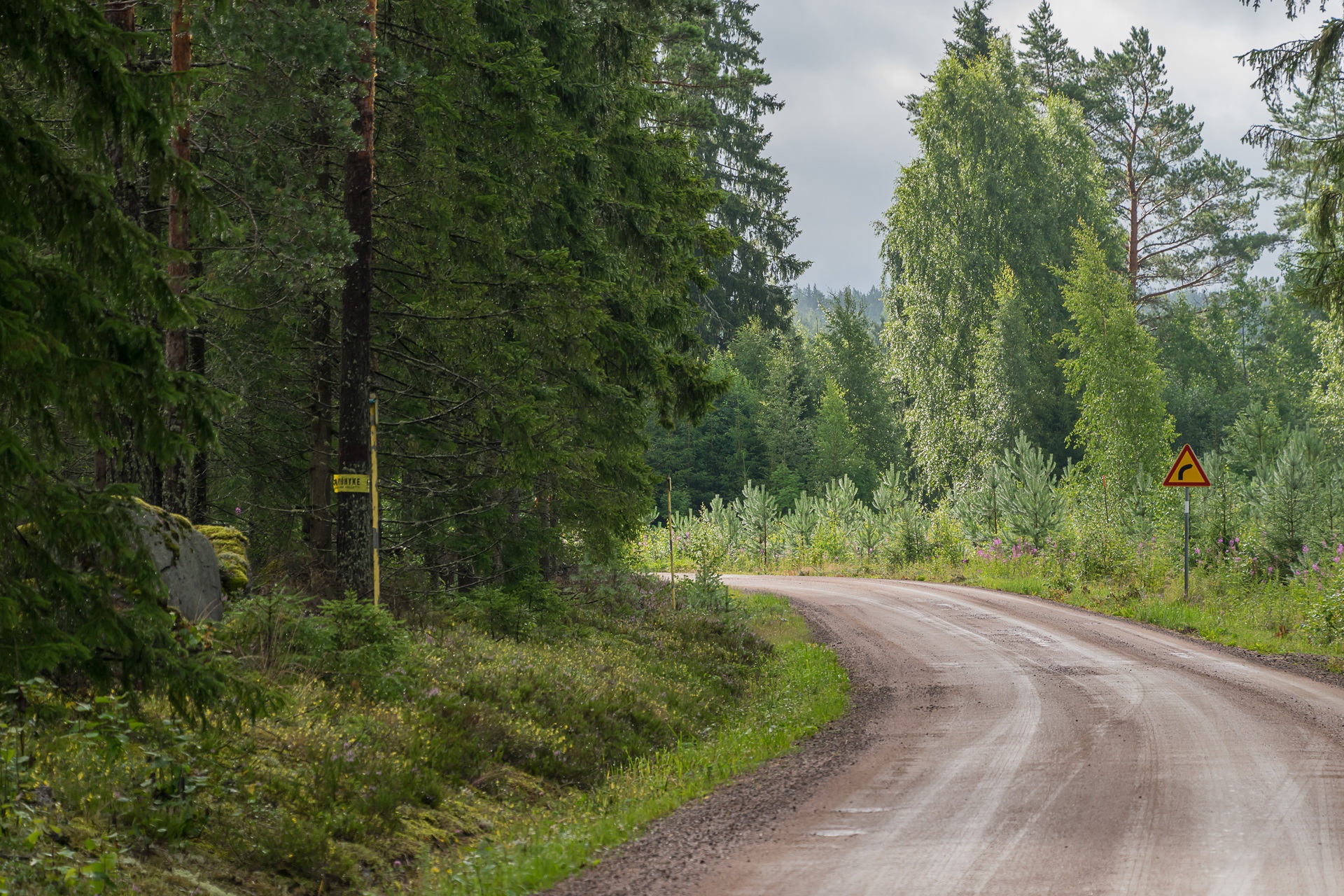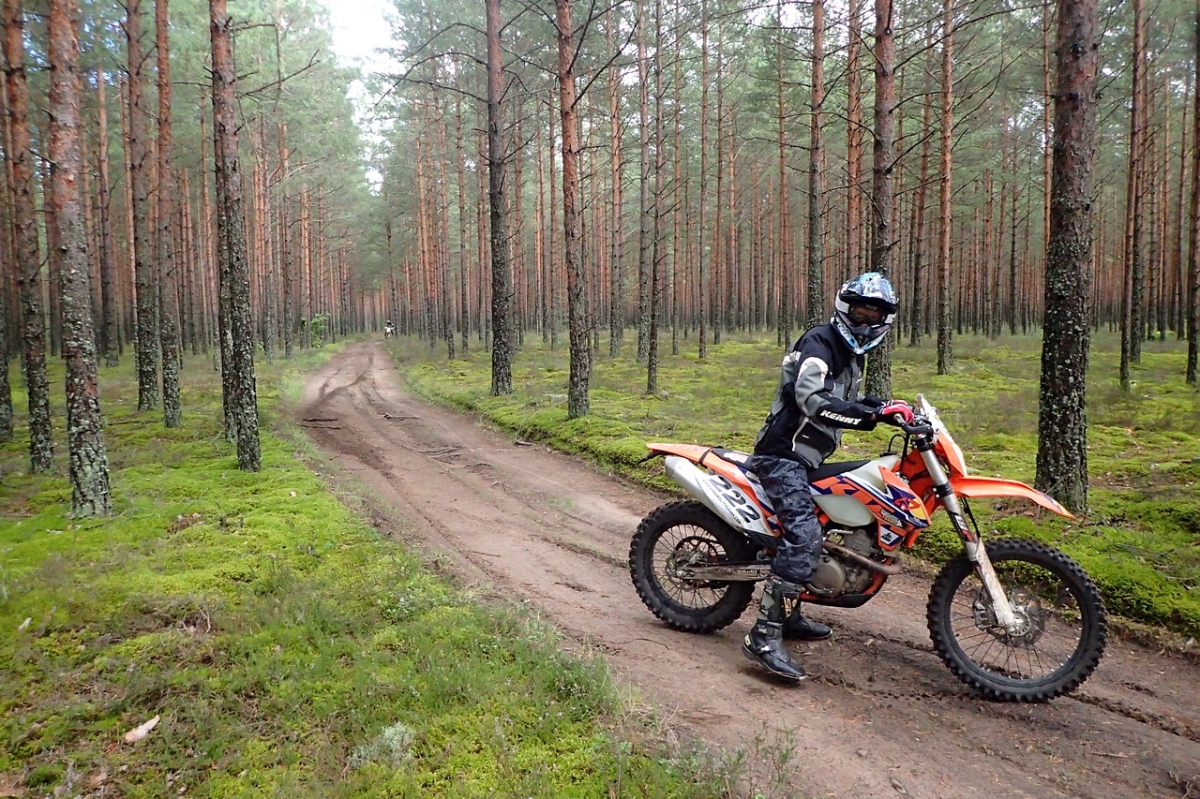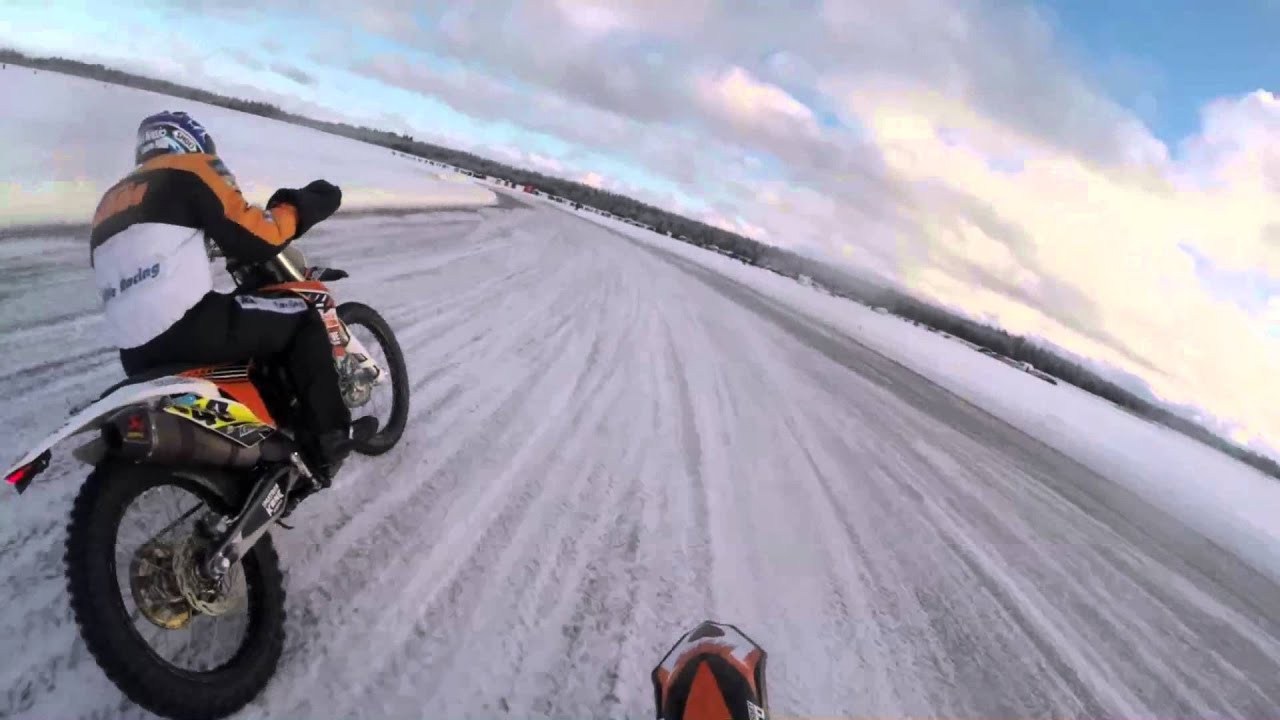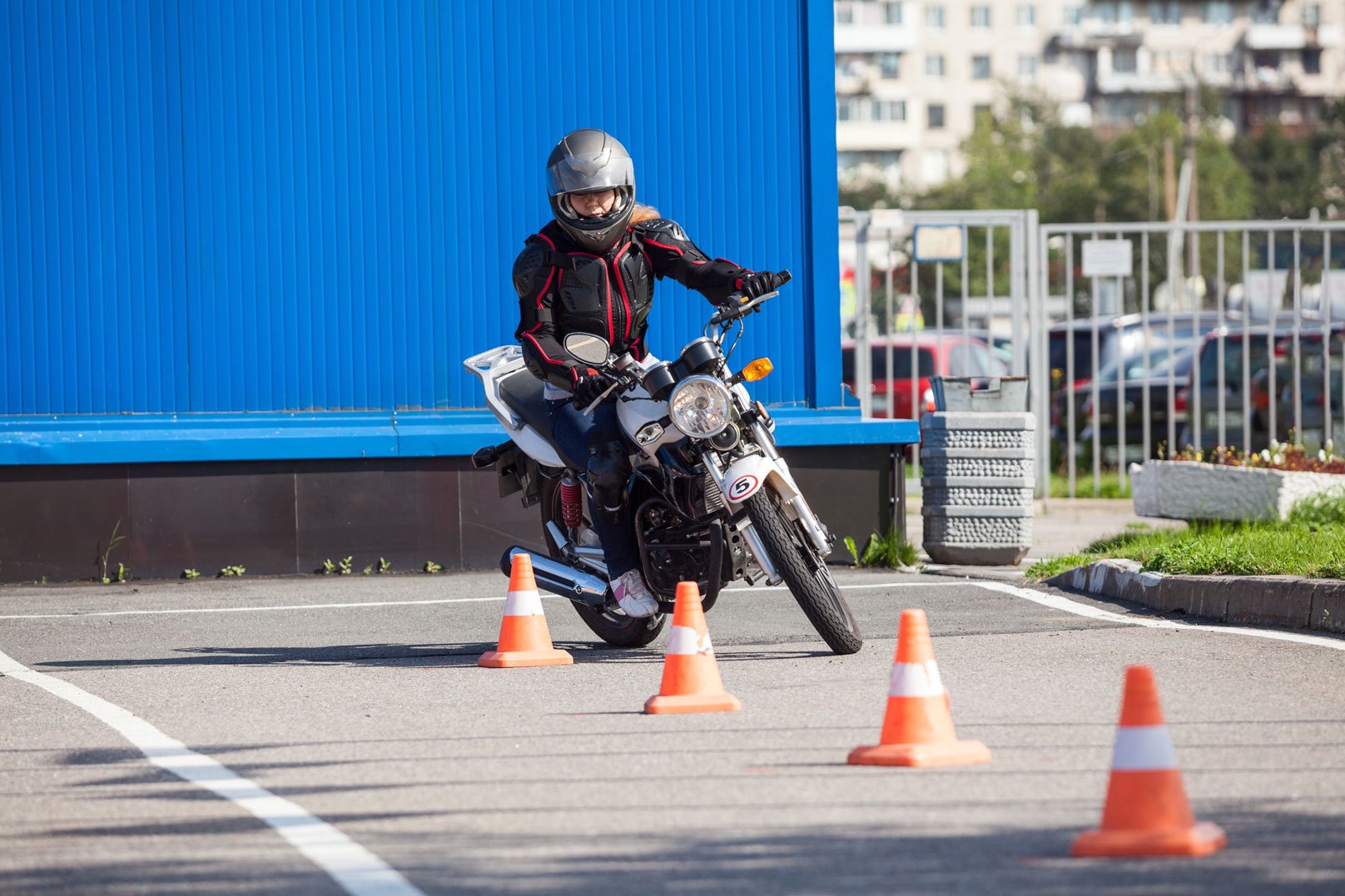Tell us honestly, what’s the first thing that pops into your mind when you think of Finland? For hockey fans, it’s the home nation of some of their favorite hockey players and goaltenders. For music fans, especially metalheads, it is one of “The Big Three” of metal, alongside Germany and the Netherlands. Computer geeks know of Linus Torvalds, the Finnish inventor of the Linux operating system. For many, it is the sheer number of champion-level drivers that have emerged from the Northern Baltic nation who have raced in Formula One, the World Rally Championship, and the World Endurance Championship—which led to the legendary saying: “If you want to win, employ a Finn.”
What you don’t think about at first, however, is that it is also a nation that has a tight and very significant relationship with motorcycles. More specifically, it is a nation that had a great first date with mopeds, moved in with the scooter, and is now married to dual-sport, dirt, and ADV bikes, although you will still find some modern cruisers and sportbikes around. There are many reasons why the Finnish love their bikes—way too many to write a single article on—so we will focus on the three most well-known.
So sit back with some traditional mustamakkara from Tampere, or a plate of mämmi if you’re especially adventurous, and let’s investigate this friendly nation’s obsession with two-wheeled motorized transportation.
The Pappa-Tunturi Motorcycle Clubs
Throughout Finland’s entire history as a nation, which dates back to only 1917 when it declared independence after being a part of the Swedish Empire and then a duchy of the Russian Empire until the Soviet Revolution, there has been a lot of extremely rapid, high-quality, and high-tech engineering and design occurring. In the city of Turku, on the South-Western coast of Finland, brothers Aarne and Eero Harkke opened a small bicycle repair shop in 1922 called Pyöräkellari Oy. What started out as a repair shop quickly evolved into small-scale bicycle manufacturing.
The name of the company was changed to Tunturi, the Finnish word for a fell, or a large, barren landscape that is moderately hilly, as these were bicycles that were meant to be able to be ridden “from Helsinki to Lapland and back again.” The small shop was soon traded for a factory as the sturdy, reliable bicycles became a near-overnight sensation.
It was around 1950 that Tunturi encountered their greatest success, however, when taking all they had learned over the years, they put a tiny 50cc, single carburetor engine on a specifically built frame, and within just a couple of years, they were the domestic market leader by a fair percentage in mopeds.
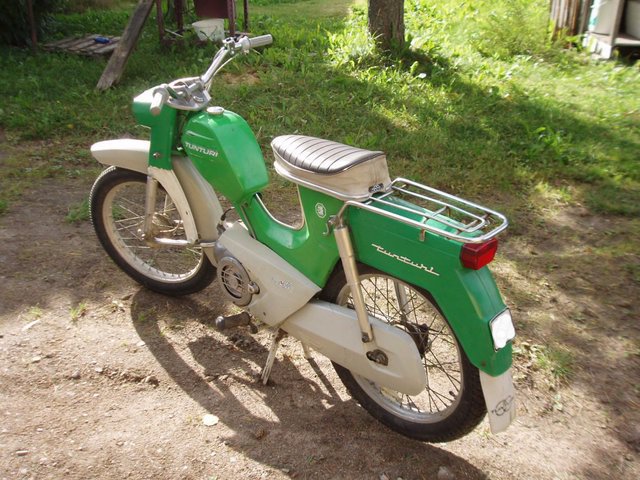
From the 50s up to the early 90s, Pappa Tunturis were as indistinguishably a part of the Finnish landscape as spruce trees, reindeer, and moose. Because it was 50cc, there was no license requirement to ride one in the otherwise quite strict Finnish road laws, and because it was a moped, it was also technically a bicycle. Because of this, two large groups of riders appeared. Teens, who are allowed in Finland to start riding mopeds at age 15, suddenly had a “motorcycle” without needing a license.
The second group of riders, as it happens, were older Finns that did not have a driver’s license, or were considered too old to be granted one, leading to the moped being nicknamed the Pappa-Tunturi, literally “Grandpa Fell.” It was also incredibly sturdy, like a two-stroke Nokia 3310, in that it would work on the hottest of summer days and the coldest of winter nights. You could drop it off the top of a building and it would dent the sidewalk instead of breaking.
Thanks to such sturdy and inexpensive innovations, it was not long before small motorcycle/moped clubs started to pop up across the country. Most often small community clubs, they steadily grew in popularity among the moped-loving Finns. One of the strangest of these clubs was Halvatun Papat, which translates roughly to mean “Heck’s Grandpas.” Despite what people say about them, the Finns do actually have a wicked sense of humor; the name is a pretty direct stab at the name “Hell’s Angels.”
Of course, with Finland being one of the big three nations that produce some of the best rock and metal in the world, it was no surprise when Halvatun Papat, a club only ten members strong, turned into a comedy music group, using the Pappa-Tunturi as both transportation and, after making some modifications to one, as a musical instrument for their rock songs.
Somehow, in a very Finnish way, this turned into TV sketches about a rowdy motorcycle club riding Pappa Tunturi’s. The sketches often show the members showing their “male prowess and bravery,” like the one involving their “initiation ritual,” which requires a new member to, well, relieve himself on an electric fence. If you want to watch the minute-long sketch, you can see it here, but it is very early 1990s Finnish humor and a bit crass, so viewer discretion is advised.
Today, you can still find moped clubs all over Finland. These either require members to have a moped of any kind—or, for the more discreet clubs, you need to have a working, rideable Pappa Tunturi. Unlike motorcycle clubs pretty much everywhere else in the world, the objective of these clubs is not so much to go riding all the time. Quite often, they’ll meet up at a cafe or someone’s home and sit around talking about fond memories of their Tunturi mopeds while sipping coffee, as many of these clubs have some quite senior members, often over 60 years old, who had grown up with their Pappa-Tunturi and have hundreds of thousands of kilometers on the odometer.
When they do go on group rides, it is often described as the sound of a swarm of bees approaching, and then you’re passed by about 20 riders on their Pappas going the speed limit and enjoying the hell out of the ride. No massive, dangerous sport-bike highway takeovers, no rolling thunder rides that stretch for a mile or two, just 10 to 20 riders on their mopeds buzzing on by with a happy little wave to you.
That, in a nutshell, is what makes the Pappa-Tunturi moped clubs so special. It’s a series of clubs dedicated to one model, from one manufacturer, that can be fixed with a hammer and a couple of curse words, some of them being over 40 years old and still in rideable shape, and it allows the older generation to get that feeling of riding together that is often excluded in other motorcycle clubs around the world.
Oh, and just as a note—most Finns like their coffee black, if you ever meet up with one of the clubs when you visit Finland and want to chat with them about it.
Why Dual Sports & ADVs Are the Favorite Bikes to Own in Finland
Touching back on the first thoughts that occur when you think about Finland, one of them is that the country, despite having less than 6 million citizens, is an information technology powerhouse. A lot of innovation has come from the small population, especially when compared to the nearly 400 million existing US citizens and over 36 million Canadian citizens.
To list just a few—Nokia is Finnish, and their brick phones and flip phones were nigh indestructible at the turn of the century (and also had many cell phone and smartphone firsts). As mentioned already, Linus Torvalds is from Finland, still lives there, and is the creator of Linux, which made Unix operating systems much more accessible to the commercial and home-use markets. A few years back, a not-very-well-known smartphone game appeared called Angry Birds, developed by a small Finnish startup called Rovio that only made several billions of dollars from licensing, direct sales, and a movie made about the game.
The reason we are pointing this out is that, once you go North or NorthEast of Tampere—which is the city with the highest inland population (244,000) of any of the Nordic countries—you enter into the famous Pohjanmaa and Savo counties of the nation. In English, these counties are often grouped together and called “The Land of 1,000 Lakes,” and apart from the main E75 highway that snakes its way up to Utsjoki (the Northernmost municipality in the country in Lapland county), the roads are gravel or packed dirt. Some of those roads famously host the 1,000 Lakes Rally of the World Rally Championship, which is known as one of the fastest, most scenic, and most technical rallies on the calendar.
If you were just taking the E75 highway up and down the nation, then a cruiser, a sportbike , or even a neo-retro bike would serve you perfectly well. However, there are two important factors to consider about the nature of Finland.
One: Finland is in the Northern Baltic/West Ural Mountains region, which creates a perfect weather inversion system that plunges the country into long, bitter, and very cold winters. Two: lots of people have cabins or small cottages out near one of the over 1,000 lakes in the middle of the country, and these are often quite far away from the main E75 highway to give the most peace and quiet possible.
If you’ve ever tried to ride a sportbike with street sports tires over gravel, it feels like you’re trying to balance on top of a popular gelatin-based dessert that Americans are very fond of. It’s a bit better on dirt, but remember: street sports tires are meant to grip hard asphalt, tarmac, or pavement as part of their design, and are not suited at all for off-road use. This is a bit of an oxymoron as well, because while the gravel and packed dirt roads are, by literal definition, roads, they are not the type suited to semi-slick, rain-siped tires.
Indeed, Finland is quite literally a place where a dual-sport or ADV bike is king. With some appropriately knobby tires, you can happily ride down the gravel or dirt road from your cottage to your favorite fishing spot, spend a lazy summer’s day fishing, maybe catch your supper, and then ride back to your cabin before sundown and prepare for the evening’s sauna.
Very common as well in this region is that the sauna is wood-fired with rocks on top to ladle water onto to get nice steam going, known as a löyly—so being able to ride down to the lake to fill up a jug or two of the pristine lake water is also a great example of why off-road based bikes just work in Finland.
As well, because Finland is mostly in the arctic circle, when winter hits, it packs one hell of a wallop. Many of those 1,000 lakes will freeze over, with the ice being several feet thick. The back roads will become inundated with heavy snow, so if you need to travel to and/or from your cottage or cabin and all you have is a bike, you can get spiked or studded tires and be able to ride through the snowed-over roads.
There is also another reason many Finns will make the trip to the frozen lakes in winter. Since the Finnish are a very hardy, Northern people that don’t really mind the cold all that much, you will see cars and SUVs hauling trailers of 1 to 4 dirt bikes up the main highway, and then turning off down a country road for a few kilometers. The reason that they are doing this? Read on below!
Wintertime Just Means More Fun: Finnish Ice Racing & Sisu
Since the country undergoes five- or six-month-long winters, the Finnish are not very good at waiting around patiently to have fun. Some will go snowmobiling; others will go to a rally school to learn how to race on snow and ice, but many will take part in Finnish Ice Racing.
To break it down as simply as possible, using motocross bikes with spiked tires, wearing several layers of warm clothes, and using the same classes as motocross, the people of Finland have developed a sport that lets them go fast, go very sideways, and have a blast doing it. In fact, it is so popular that there are now multiple variations of the sport, including flat-track racing on ice!
There are multiple leagues from regional amateur and just-for-fun pickup leagues, all the way up to national championship leagues, much like pro motocross. For an example, watch this video, which is a regional final for the SuperMoto 450 class. These ladies and gentlemen are not fooling around! Also, the “Jäärata” in the video title literally translates to “Ice Racing.”
For many non-Finnish people, the idea of riding at over 100 KPH in sub-zero temperatures with spiked tires and having to literally carve the rear wheel through a corner might seem like insanity. In Finland, however, there is a word that describes that specific insanity in fairly plain terms. That word is “sisu,” pronounced see-soo, and is not so much translatable to English as it is a single word to describe a full concept.
Sisu, in the basest concept, is about being stoic, determined, brave, full of grit and tenacity, and resilient in the face of challenges. It is so ingrained into the Finnish that they consider it to describe their national character, and it also helps describe why so many Finns seem to have that little bit extra when it comes to powersports and motorsports with world champions like Mika Hakkinen, Tommi Makinen, and the late, great GroupB WRC driver Hannu Mikkola. In terms of ice racing, sisu is core to the entire sport and is part of why it is so beloved as a pastime.
First of all, straddling a 125cc to 500cc motocross bike on the frozen surface of a deep lake with 19 others in a heat race, with spiked tires and the willingness to race hard is about as perfect a demonstration of that courage described by sisu. Then add the fact that these bikes are leaning over 40 to sometimes 50 degrees in the corners, their rear wheels carving away behind them as they countersteer, and requiring that grit, tenacity, and determination to keep it in the throttle, on the edge of catching and flipping you into a highside or losing the front and sliding out in a lowside. It is about as Finnish a sport you can get, and the Finns absolutely love it.
Another reason that the Finnish are, in American terms, a touch crazy is specifically because of their winters. An example of this is that to get a motorcycle endorsement on your license in the USA, or a class 6 license in Canada, you take a training course, you go to the DMV/registry, and you take a road test. You pass, voila, you have an unrestricted motorcycle license, and you can get one as young as 16.
In Finland, you can also get a motorcycle license at 16, known as A-1, but there are major differences. You can ride a motorcycle up to 125cc, with a maximum power output of 11 kW (15 HP), and which has a power to weight ratio equal to or less than 0.1 kW per kilogram. In essence, this license limits you to scooters and dual-sport/off-road bikes.
If it’s close to winter, you also have to demonstrate as part of the test your ability to handle the motorcycle on a slippery surface, in the same type of way that people pursuing their B license for cars have to demonstrate skid recovery on a soaked skidpad.
If you can see the equation forming already, then you can understand why the Finnish so enjoy their winter sports and races. Take a 16-year-old full of grit, determination, and bravery, plant them over a 125cc motocross bike on a frozen lake, and let them race. When your winters can last up to six months, you could either stay inside and read, as Finland does have the highest number of library books checked out per capita, or you could go out and have some fun! We know which choice we would make…
Acknowledgment
I must take a moment here and thank my long-time friend Jarmo Puskala for translations, links to videos, and an inside view of the Finnish culture, including sisu. You might have come across his writing—as he came up with the concept and co-wrote the script for the movie Iron Sky, which is not only one of the most widely seen Finnish-produced films but one of the biggest crowdfunded films of all time.


